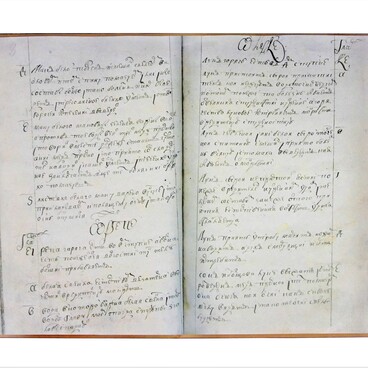At the end of the 15th century, in Europe, the first attempts were made to systematize the provision of medical care during the war. In 1487, the first military field hospital was created. At the end of the 16th century, when the regular Spanish army was formed, a document came into force regarding the allocation of wards in the civilian hospitals for military needs.
In 1591, the French army issued the first regulation on provision of medical aid to the wounded in mobile and stationary field hospitals. At the same time, doctors entered the staff of the German troops. Despite the advantages, these reforms did not cover the evacuation of soldiers wounded in battles. In European armies, the wounded were transported by the wagon train.
In the Russian State, the approach to medical care for wounded soldiers was generally similar to the European approach. In the first third of the 18th century, there was no medical transportation system in the army, so the systematic evacuation of the wounded and sick was not practiced. During campaigns, the army was still not accompanied by regular military hospitals, soldiers with minor injuries were transported in wagon trains behind battle units. The seriously wounded, as well as some of the medical officials and medical equipment, were left in large retrenchments — fortifications located behind the main position of the defending forces. From here, when the army was returning from a campaign, the wounded and sick were taken to border hospitals.
Here is how the Swede Peter Englund described the evacuation of troops in the book ‘Poltava: The Story of the Death of One Army’:
Model of the Austrian wagon
Время создания
18th century – beginning of 19th century
Размер
120x20x40 cm
Техника
modeling
Коллекция
#4
Model of the Austrian wagon
#2
#5
At first we moved fast enough, but it was getting dark, and with the onset of night there were difficulties. In the dark, the marching discipline loosened, most of all, apparently, in some parts of the wagon train. According to the young warrant officer Gustaf Abraham Piper, who was traveling with the wagon train because of the injury, ‘no one obeyed anyone, everyone was worried only about themselves and tried to get ahead.’ Near the village of Federki, there was a road congestion near an impassable swamp, which had to be overpassed only crossing the wobbly bridge. At this point, the troops had to wade through a swarm of wagons in order to be in advance.
#6
The exhibition of the museum displays a model of the 18th century wagon for the transportation of wounded. This wagon of the Austrian model dates back to the era of Peter I. It is two-axle, consisting of a chassis with an installed body. The running gear for such wagons was made from the main frame: several longitudinal side rails were made up together and tied with crossbars; axles with wheels were attached to the latter. The wheels were made without leaf springs for amortization. The body of the wagon was equipped with benches and seats for the wounded of various degrees of severity. Usually, they were tied to the sides of a wagon with straps. Not every patient could withstand such a journey.
#3
Ministry of Culture of the Russian Federation
читать дальшескрыть
00:00
00:00
1x
Model of the Austrian wagon
Время создания
18th century – beginning of 19th century
Размер
120x20x40 cm
Техника
modeling
Коллекция
Открыть в приложении
Поделиться



